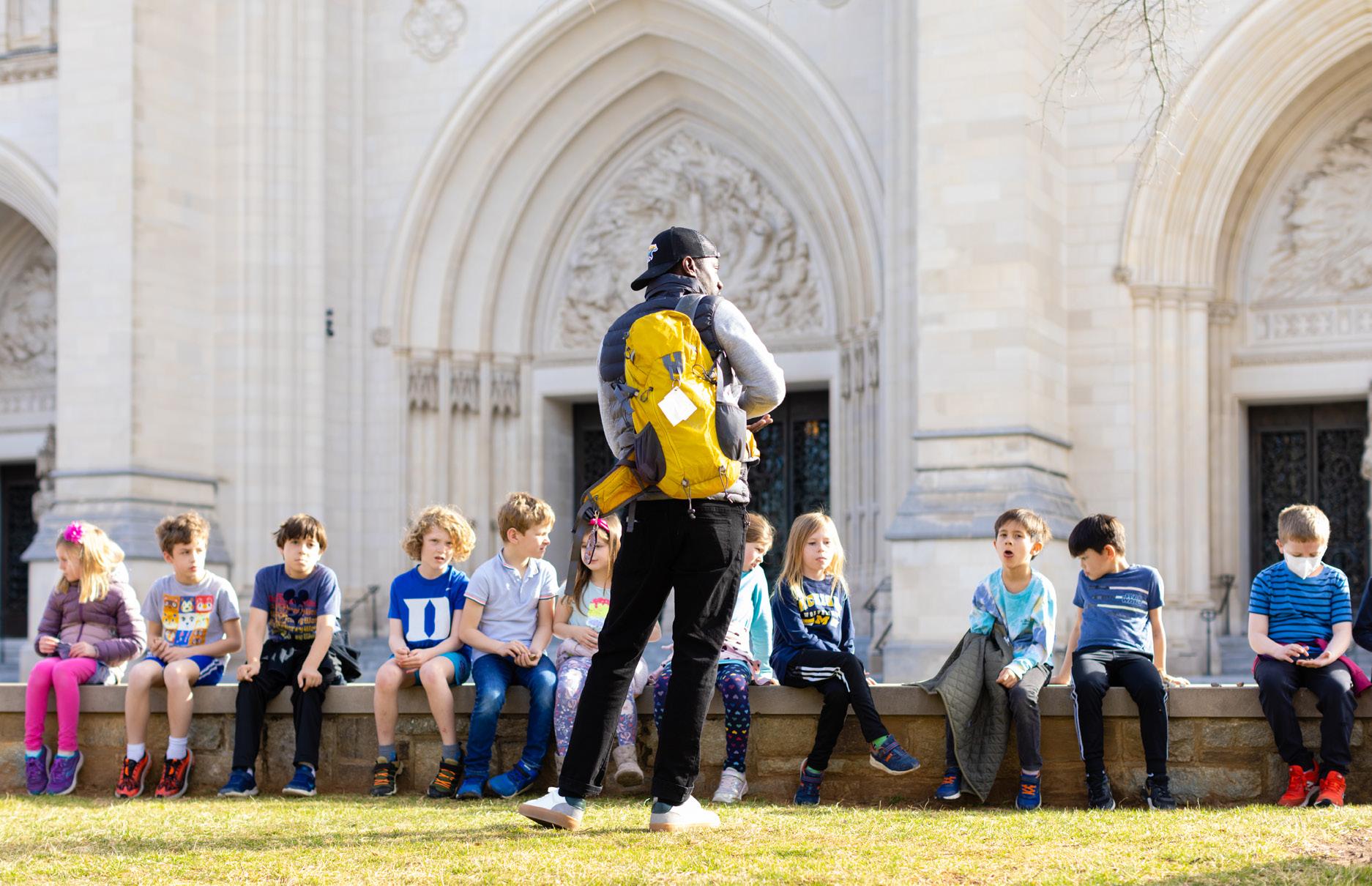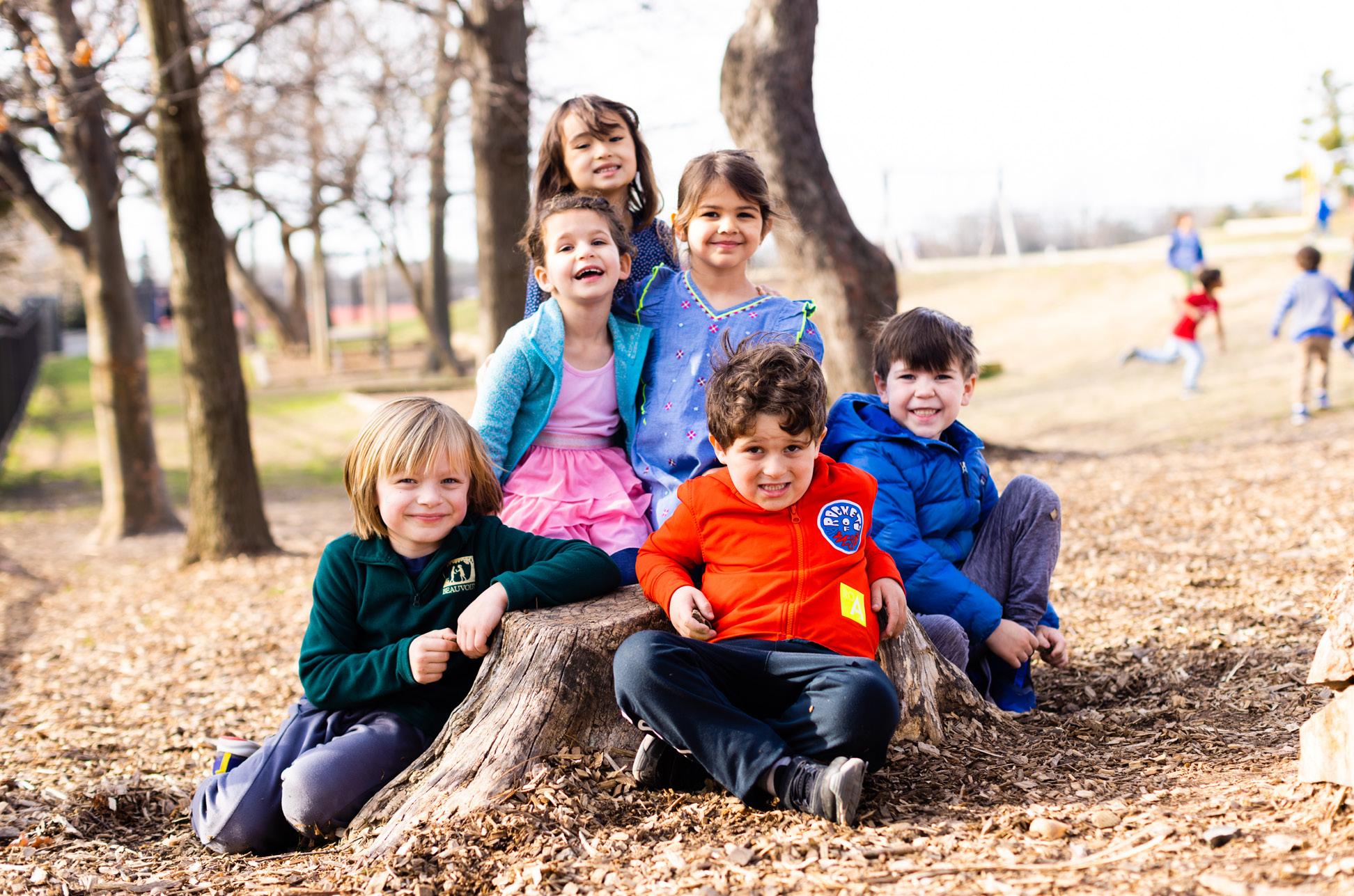
3 minute read
COVID-19 Drove Learning Online Beauvoir Turned to the Great Outdoors
from Views Fall 2022
When Beauvoir returned to in-person learning in fall 2020, teacher Joseph Baggett and librarian Tony Hurst were eager to take on a new challenge: piloting an Outdoor Education class at Beauvoir.
The idea for an Outdoor Education program was born out of Beauvoir’s hybrid-learning model during the pandemic as an opportunity for students learning virtually to safely interact with classmates and teachers in person. Students Pre-K through third grade explored nearly 60 acres of the Cathedral Close once a week. According to Mr. Hurst and Mr. Baggett, the program was a welcome opportunity to expand students’ comfort zones as well as their classrooms.
“Outdoor Education provides a safe place where children can take individual risks, set individual goals, experiment, and build their brave, confident growth mindset,” shared Mr. Hurst and Mr. Baggett. “It helps them experience risk taking and exploration in ways that push them one step further than kids might have thought to go.”
Research shows that spending time in nature has physical and social-emotional benefits for young children. A 2013 study by the American Chemical Society found that looking at nature scenes can lower heart rates and reduce stress. In 2020, researchers found that incorporating green space into a child’s daily play space can increase pro-social behaviors. In the midst of a global pandemic, when many children spent more time indoors and isolated from their peers, Outdoor Education offered both opportunities for exploration and forging connections.
“I think it helps children see that they are part of something bigger by being outside in nature. We also know that just breathing outside is something that helps us find our center,” said Dr. Holly Joyner, Beauvoir’s Director of Guidance.
The new Outdoor Education curriculum followed a rich tradition of experiential learning at Beauvoir, where students spend time outdoors at least twice per day. From Cathedral Close spaces like Olmsted Woods and Bishop’s Garden
Outdoor Education provides a safe place where children can take individual risks, set individual goals, experiment, and build their brave, confident growth mindset.
TONY HURST AND JOSEPH BAGGETT, OUTDOOR EDUCATION TEACHERS
to Beauvoir’s own playground and Children’s Garden, young children learn through imaginative play and safe, joyful exploration. When asked about their favorite moments in Outdoor Education, Beauvoir students were particularly enthusiastic about their newfound skills in reading and creating maps, identifying birds that frequent our Cathedral Close, and polishing rocks.
Mr. Hurst and Mr. Baggett cite watching students take the lead in their own learning as one of their own highlights of weekly Outdoor Education classes. They recalled a particular rainy day on which students were racing leaves downstream in Bear Creek as part of an outdoor physics activity. Each leaf needed to be flat, light, and completely intact in order to flow downstream as fast as possible.
One student approached the activity with particular curiosity. “After the first attempt, this student kept trying and trying. She observed how each leaf moved down the stream according to its structure and learned instinctively which leaf would meet the criteria,” said Mr. Baggett. “Through play, she understood what it would take to keep the leaf freely moving down the stream. Much to her delight, her leaf managed to ‘win’ in her pod as the fastest downstream.”
Dr. Joyner noted that the new learning experiences offered by Outdoor Education were an opportunity for students to discover their own talents. “What I think is fascinating is to see the kids who really love and lead when they are outside, and [Outdoor Education] can be a place where they really shine.”
It is more fun when you touch the bugs, pick apart rotting stumps, and always look for treasures.

TONY HURST AND JOSEPH BAGGETT, OUTDOOR EDUCATION TEACHERS
One area where students were able to expand their horizons (as well as their taste palates) is the Beauvoir Children’s Garden. With the guidance of their teachers, students tried several vegetables straight from the vine. “Kids found out that they were huge fans of fennel with its sweet, black licorice taste. While many may not want to eat their salad at home, it is exciting when you can eat the spinach, arugula, and kale that you planted yourself,” Mr. Hurst noted. “We had some picky eaters willing to pick and taste oregano right off the plant. Strong smells and peppery tastes are exciting when it is a discovery instead of a requirement at dinner.”
Mr. Hurst and Mr. Baggett believe that students will take this brave attitude with them and apply that spirit of adventure to other disciplines. They both agree, “It is good to venture off. It is okay to get lost together. It is more fun when you touch the bugs, pick apart rotting stumps, and always look for treasures. It is good to know a few edible plants that are safe, and it is always good to taste vegetables in the garden!” ✿










